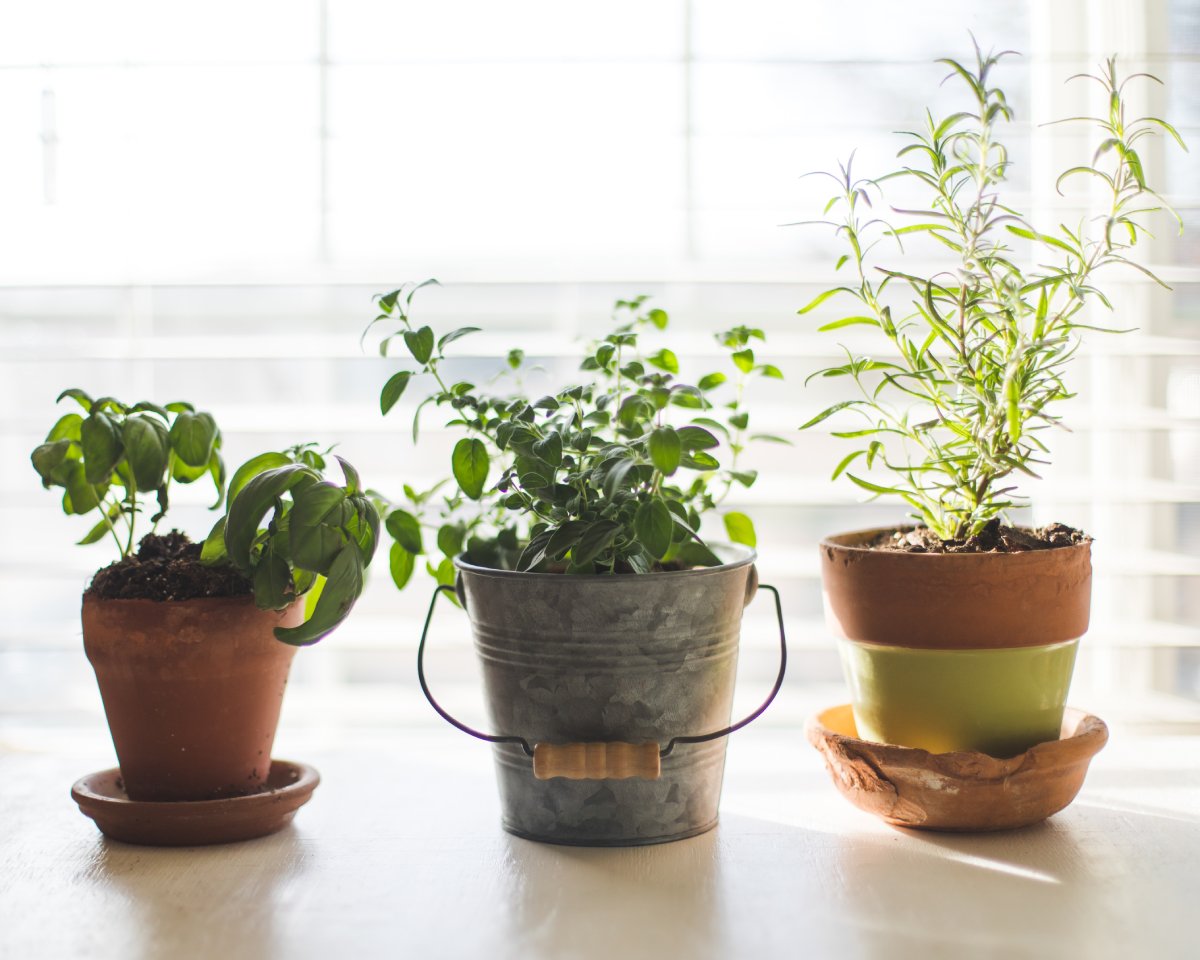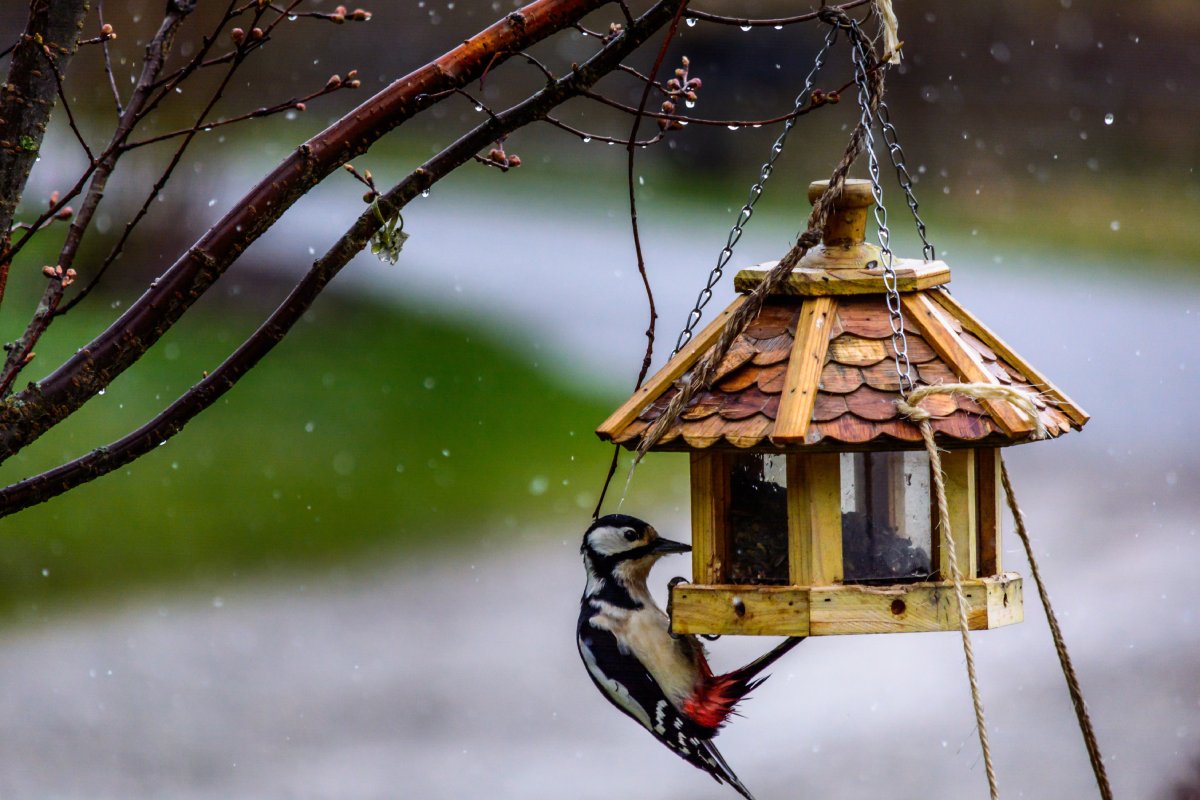Introduction
Embarking on the enchanting journey of cultivating your own herbs, you’re not merely sowing seeds but also sewing a tapestry of sustainable, flavorful, and healthy living. Growing your own herbs, whether in tiny pots on a sunlit windowsill or a dedicated patch in your backyard, wraps you into a world where every leaf tells a story of connection—between you, your food, and the environment. Engaging in this age-old practice, you’re not just garnishing your dishes but also enriching your life and the planet with a sprinkle of sustainability, wellness, and a dash of vibrant flavors.
Importance of Growing Your Own Herbs
A Tale of Flavors and Freshness
When you intertwine your fingers with the soil and nurture the sprouting greens, you cultivate a connection that transcends beyond mere gardening. Each snip of your homegrown herbs carries the freshness and robustness of flavors that store-bought variants often lose in transit. Your culinary creations get adorned with ingredients that are as fresh as they can be, embodying the true essence and vigor of the herbs.
A Stitch in the Sustainability Quilt
In every seed planted, you sow a tiny yet significant rebellion against the practices of large-scale agricultural setups, which often incorporate pesticides and preservatives. Your little herb garden becomes a patch in the vast quilt of sustainability, reducing dependency on commercially produced herbs and thereby minimizing the environmental footprints intertwined with their production and transportation.
Health and Harmony
Harvesting from your herb garden, you embrace not just the physical, but also the mental and emotional well-being bestowed by the act of nurturing life. The sprouts that emerge from the seeds mirror a sense of accomplishment and tranquility, while the herbs themselves, devoid of chemicals, bolster your physical health, ensuring your wellbeing is rooted deeply into a holistic foundation.
Benefits for Flavor and Sustainability
Elevating Culinary Creations
With an arsenal of fresh herbs at your fingertips, every dish transforms into a canvas where you paint with bold strokes of flavor, elevating even the simplest of meals into gourmet experiences.
Nurturing the Planet and Palate Together
Your herb garden blossoms into a sanctuary that benefits not just your culinary ventures but also the planet, as it signifies a stride towards reducing waste, curbing unnecessary packaging, and negating the need for transporting herbs from afar.
Wholesomeness in Every Bite
When your meals are garnished with homegrown herbs, every bite encompasses not just flavor but also a wholesomeness derived from consuming something untainted by chemicals and nurtured by your own hands.
Overview of the Blog’s Structure
Charting the Path Ahead
Embarking together on this green journey, we’ll delve into the essentials of starting your herb garden, exploring the intricacies of choosing the right herbs, understanding their needs, and cultivating them with love and care.
Nurturing Knowledge
Progressing further, we’ll nurture our knowledge on maintaining the garden, addressing common challenges, and ensuring our green companions thrive vibrantly.
From Garden to Garnish
In the segments to follow, we’ll explore how to harvest, preserve, and utilize these herbs, ensuring that their journey from garden to plate is seamless and enriching.
Step into this journey, and let’s together weave a story where our foods are richly flavored, our bodies healthfully nourished, and our planet lovingly cherished. Through the subsequent sections, this guide will gently hold your hand, guiding you through the verdant paths of herb gardening, ensuring that every step you take is firmly rooted in confidence and blossoming with green possibilities.
Understanding Herb Basics
Before submerging our hands into the nourishing soil, let’s pause for a moment to understand the green companions we intend to cultivate in our herb garden. Herbs, with their incredible array of flavors, fragrances, and health benefits, offer more than mere garnishes to our dishes. They invite us to delve into a realm where every sprout tells a story of earth, care, and culinary artistry. They’re not just plants; they’re tiny packets of flavors, aromas, and therapeutic properties, neatly wrapped by nature, ready to infuse our lives with their goodness.
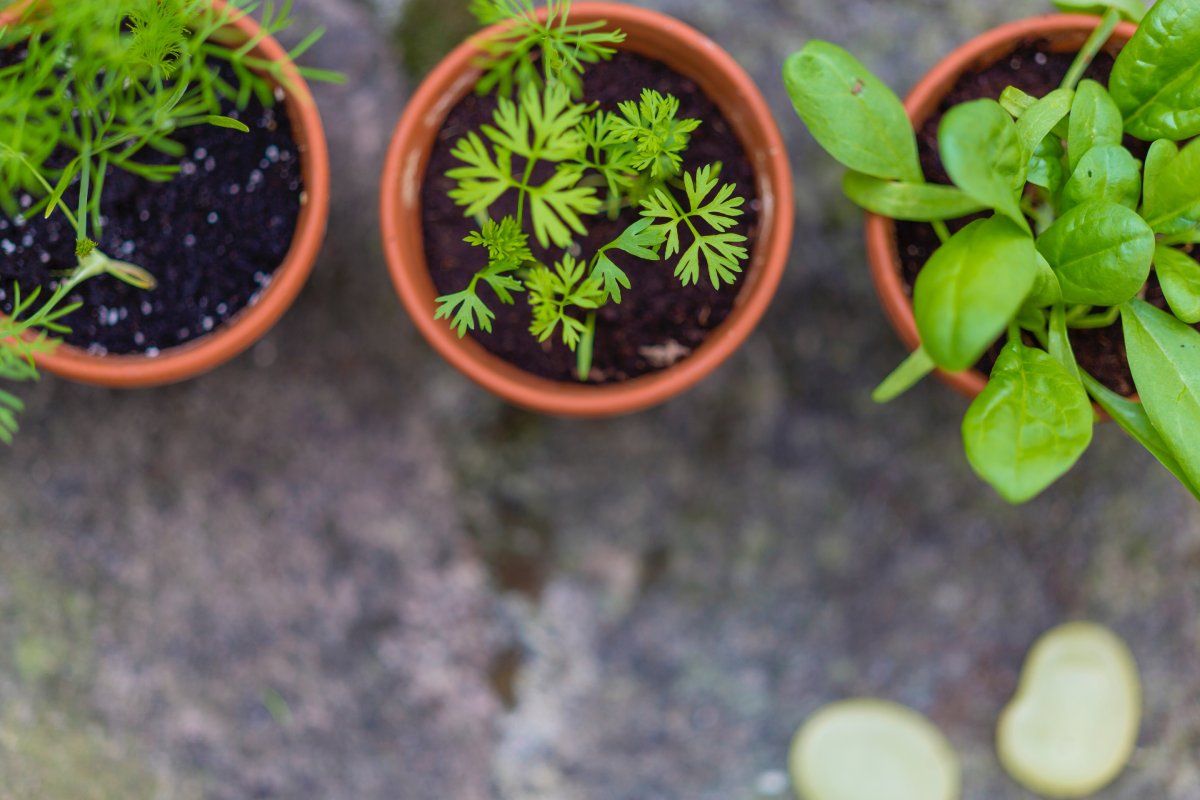
Explanation of What Herbs Are
A Symphony of Flavors and Fragrances
Herbs come from the leafy and green part of plants, offering a natural palate of flavors and fragrances. They are essentially plants with savory or aromatic properties that are used to flavor foods, provide fragrances, or even have medicinal benefits, intertwining our culinary practices with threads of ancient wellness traditions.
From Culinary to Therapeutic
While often celebrated for their culinary prowess, herbs have traditionally woven through the fabrics of various medicinal practices, offering remedies and health benefits that have been embraced for centuries. The utilization of herbs spans across providing delicate flavors to dishes, offering aromatic fragrances, and being potent carriers of therapeutic properties.
Benefits of Using Fresh Herbs
Culinary Creations Blossoming with Freshness
Fresh herbs effortlessly elevate our culinary creations, infusing them with robust and vivid flavors that are incomparably vibrant. They don’t just add flavors but weave an intricate pattern of freshness into every bite, making meals not just a feast for the palate but also a sensory celebration.
A Wellspring of Health
They are powerhouses of vitamins, antioxidants, and a myriad of health benefits, safeguarding and enhancing our wellbeing. Fresh herbs, with their untarnished vitality, ensure that the nutritional and therapeutic benefits they offer are rendered in their most potent form.
An Ethereal Aromatic Experience
Bringing fresh herbs into your meals and spaces allows you to infuse them with enchanting aromas that uplift and invigorate, enhancing not just the taste but also the overall dining experience and ambience of your spaces.
Common Herbs to Grow at Home
Basil: The Aromatic Joy
With its lush green leaves and sweetly fragrant profile, basil doesn’t just add to the visual aesthetics of your garden but also brings a sweet and slightly peppery flavor to your dishes.
Mint: A Refreshing Companion
Mint, with its refreshing and cool flavor, serves as a delightful addition to various beverages and dishes, providing a burst of freshness with every leaf.
Rosemary: A Culinary Staple
Rosemary, with its needle-like leaves and a flavor profile that’s beautifully rich and slightly reminiscent of pine, brings a robust character to a variety of culinary creations.
Parsley: A Versatile Green
Parsley, often seen as a simple garnish, is a culinary gem that can brighten flavors and add a fresh, clean taste to dishes.
Chives: Delicate Oniony Bliss
Chives offer a mild and delicate onion flavor, enhancing dishes with its subtle yet distinctive taste and adding a dash of vibrant green.
In the cozy nest of your future herb garden, every single one of these plants will whisper stories of ancient traditions, of flavor tales told through generations, and of the simple, potent beauty that nature so generously bestows upon us. Through the subsequent sections, we’ll dive deeper into exploring how to cultivate, care for, and cherish these green treasures in our own little patches of earth, turning our spaces into sanctuaries of flavor, wellness, and sustainability.
Selecting the Right Herbs
Embarking on your herbal journey begins with selecting the right companions to grace your garden. The enchanting world of herbs provides a splendid array of choices, each with its own unique flavor, aroma, and health benefits. While the diversity is truly a treasure, making informed decisions on which herbs to cultivate is pivotal to establishing a thriving, vibrant garden that not only beautifies your space but also becomes a constant, fresh supply for your culinary adventures and wellness needs.
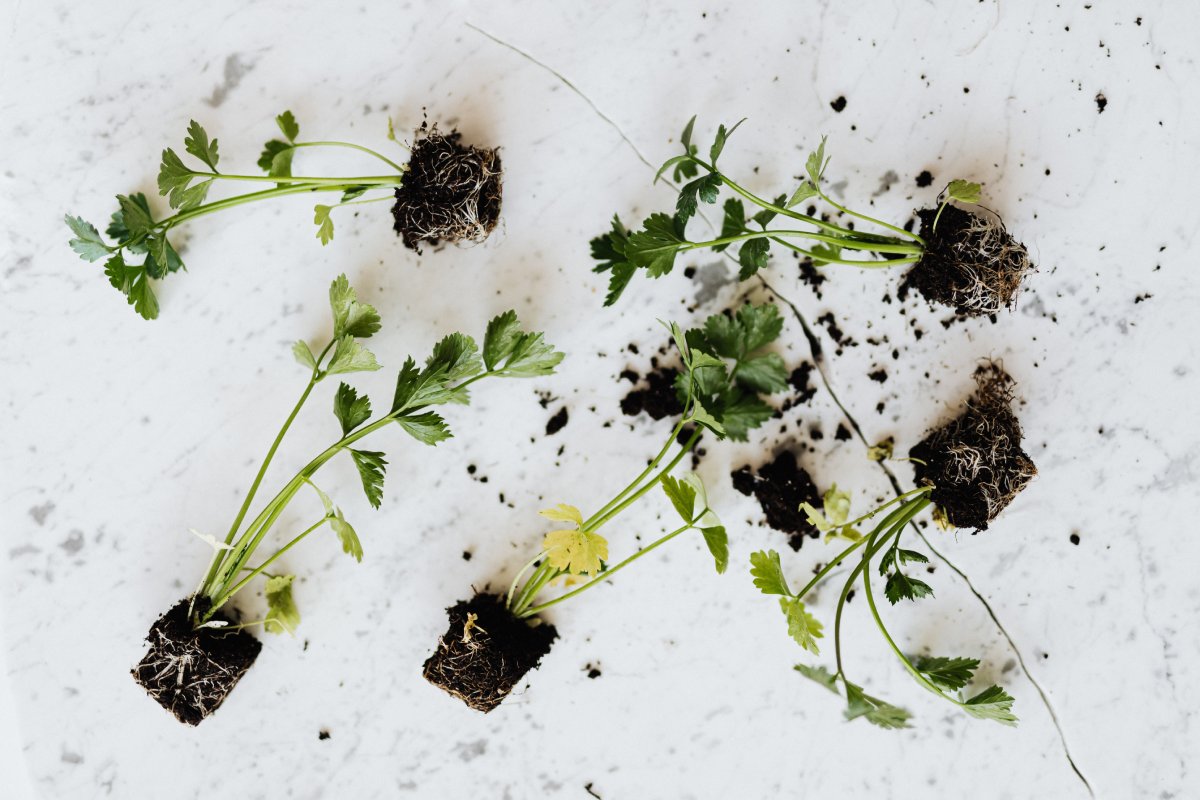
Factors to Consider: Climate, Space, Use
Adapting to the Climate
The harmony of your herb garden with the local climate cannot be overstated. Some herbs bask under the sun, while others prefer a shadier abode. Understanding your regional climate and choosing herbs that can flourish within its confines sets the foundational stone for a flourishing garden.
Nurturing in Available Space
Space is a nurturing ground. Be it a sprawling garden or cozy balcony spaces, selecting herbs that can thrive within your available spatial parameters ensures that they have the room they need to grow healthily and vibrantly.
Aligned with Your Use
Cultivating herbs that find a place in your kitchen, teas, or wellness practices ensures that they are utilized, cherished, and provide value beyond their aesthetic appeal.
Most Versatile Herbs for Beginners
Basil: A Culinary Darling
Basil, with its myriad of varieties and easy-to-grow nature, becomes a fragrant, flavorful, and utterly delightful starter herb, gracing anything from pizzas to pesto with its presence.
Mint: A Breezy Growth
Mint, with its unassuming demeanor, sprouts generously, offering its cool, refreshing flavors to uplift beverages, salads, and desserts.
Parsley: The Understated Hero
Parsley, while often relegated to the role of a garnish, is a resilient, versatile herb, breathing fresh, clean flavors into a multitude of dishes.
Chives: A Subtle Flavor Enhancer
Chives quietly enhance flavors without overpowering, and their hardy nature and minimal care requirements make them a fantastic starting point.
Rosemary: A Robust Presence
Rosemary, almost shrub-like, with a striking, piney flavor, doubles as a culinary and aromatic herb, resilient and relatively easy to manage for beginners.
The Balance of Annuals and Perennials
Embracing Annual Herbs
Annual herbs, like basil and cilantro, go through their entire life cycle in a single growing season, offering a burst of flavor, color, and aroma in a condensed time frame, requiring re-planting each year.
Welcoming Perennial Herbs
Perennials such as mint, rosemary, and chives, graciously return year after year, establishing their presence and slowly expanding their territory, offering a consistent, enduring supply.
Crafting a Harmonious Blend
Strategically selecting a mix of annuals and perennials offers a dynamic, balanced herb garden. While the perennials ensure a constant, reliable supply, the annuals bring a seasonal diversity and novelty, keeping the garden vibrant, varied, and endlessly exciting.
In intertwining your spaces with these chosen herbs, you’re crafting more than a garden; you’re weaving a tapestry of flavors, aromas, and therapeutic goodness that will cascade through your dishes, teas, and overall wellbeing. In subsequent sections, let’s delve into sowing, nurturing, and harvesting these precious greens, guiding them from soil to plate with care, respect, and an enduring appreciation for the earth and its bountiful offerings.
Indoor vs. Outdoor Herb Gardening
Embarking on the verdant journey of herb gardening invites you into a world where you become the nurturer of your mini ecosystem, irrespective of whether it resides within the cozy confines of your home or in the expansive embrace of the outdoors. Both indoor and outdoor herb gardening possess their unique charm and sets of advantages, sprinkled with a few challenges that any gardener, new or experienced, navigates through. Your journey through herb gardening should resonate with your space, time, and lifestyle, crafting a green sanctuary that not only thrives but also intertwines seamlessly with your daily rhythm.
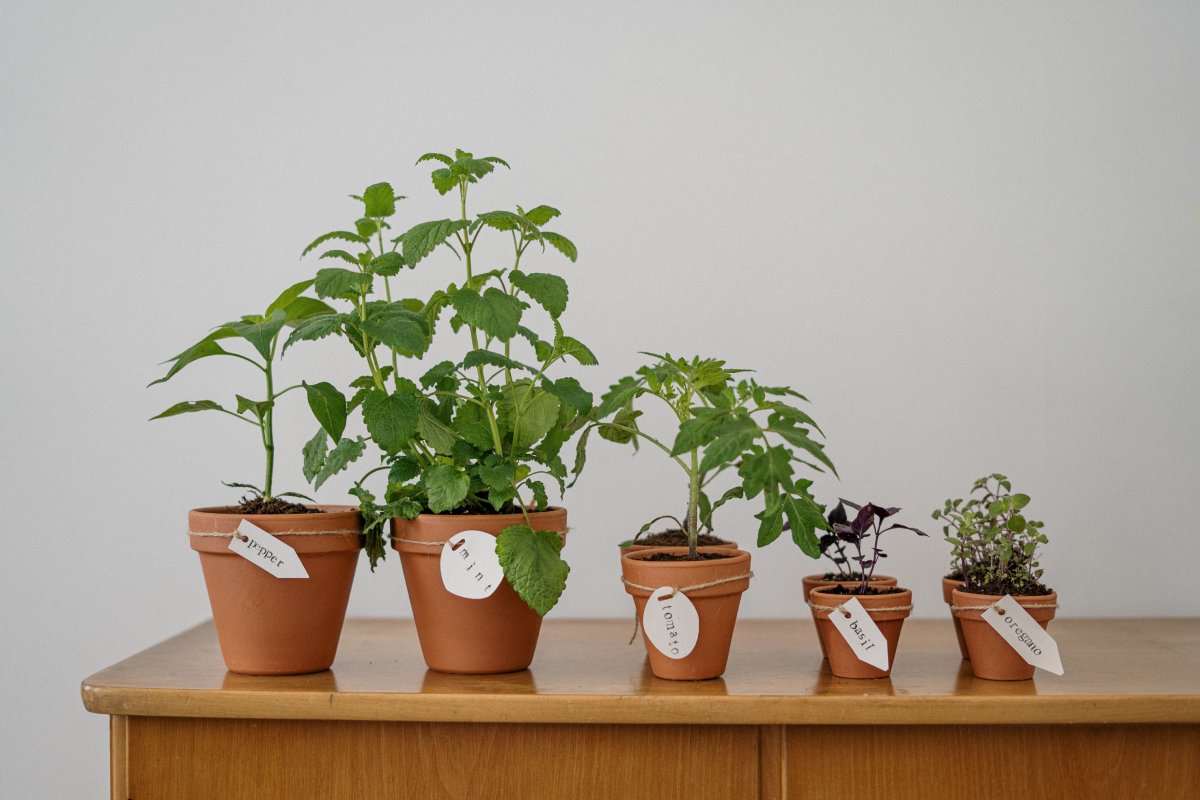
Pros and Cons of Indoor Herb Gardening
Control is Key
Indoor herb gardening affords you significant control over the environment, safeguarding your precious greens from the whims of weather, ensuring stability and predictability in their growth.
Accessibility and Convenience
The immediate proximity of your herbal buddies means fresh flavors are always just a snip away, integrating effortlessly into your culinary endeavors.
Challenges: Light and Space Limitations
Despite its conveniences, indoor herb gardening sometimes wrestles with limitations in natural light and space, necessitating supplementary lighting or strategic placement to ensure your herbs receive the love from the sun they so deserve.
Pros and Cons of Outdoor Herb Gardening
Bask in Natural Brilliance
Outdoor herb gardens thrive under the unfiltered, vibrant energy of the sun, enjoying the natural light cycle and the myriad of benefits it brings to their growth and flavor development.
Expand Freely
Space, often a luxurious commodity in indoor settings, becomes a generous friend outdoors, allowing your herbs to stretch, breathe, and flourish unabashedly.
Challenges: Weather Whims and Pests
Conversely, the openness of outdoor gardening exposes your herbs to the caprices of weather and potential munching from pests, requiring a vigilant eye and proactive measures to safeguard their vitality.
Deciding What’s Best for Your Circumstances
Analyzing Your Space
Evaluate the space at your disposal, both indoors and outdoors. Consider the light, the airflow, and the expansiveness, aligning it with the needs of the herbs you wish to cultivate.
Weaving into Your Lifestyle
Your herb garden should weave elegantly into your lifestyle, ensuring it’s nurtured, cherished, and utilized optimally. Choose a method that resonates with your daily rhythms, spatial realities, and culinary habits.
Future Expansion Possibilities
While your initial foray into herb gardening may be modest, allow room for its potential expansion as your green fingers get defter and your interest deepens.
Through the gentle undulations of the journey, your herb garden, be it nestled indoors or rooted outdoors, will become a reflection of your care, your passion, and your respect for the incredible world of herbs. The path you tread, influenced by your individual circumstances, will unfurl a unique, personal story where you and your herbs grow, not just in physicality but in a deep, symbiotic relationship that enriches, flavors, and heals.
In the forthcoming sections, delve deeper into the actual steps of crafting your herb garden, sowing seeds (or planting young herbs), nurturing them, and finally, witnessing them blossom under your tender care. May your herb garden be not just a source of fresh flavors but also a sanctuary where you find peace, fulfillment, and a profound connection with nature.
Essential Tools and Supplies
Embarking on your herb gardening journey extends an invitation not just to cultivate aromatic greens but to equip yourself with an arsenal of tools and supplies that become your allies in this verdant venture. Each tool, each bag of soil, and every pot you select becomes an intrinsic part of this journey, ensuring that your herbs not only survive but vibrantly thrive, contributing their lush vitality and distinctive flavors to your culinary creations and wellness practices. Establishing a well-thought-out toolkit and choosing premium supplies lay a robust foundation, ensuring that your herbs are given the best environment to prosper.
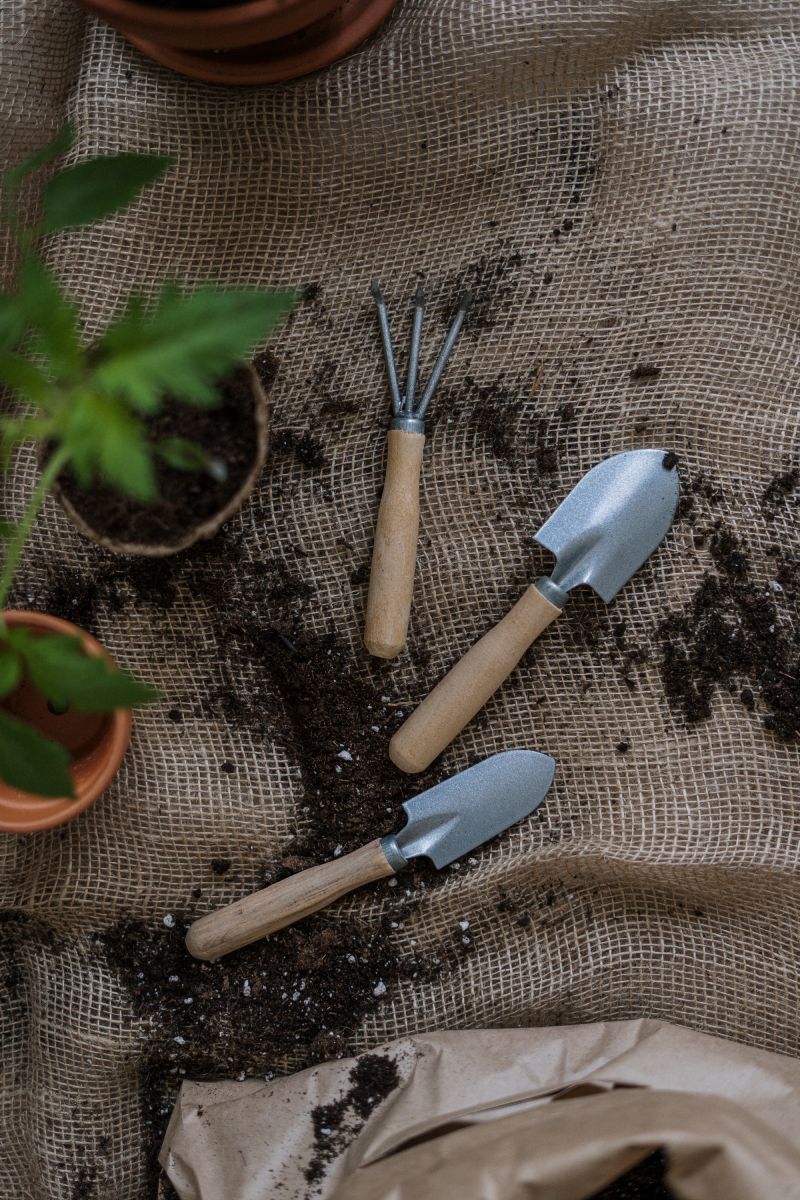
Overview of Required Tools for Herb Gardening
Gentle yet Robust Tools
Your herb garden requires a delicate touch, partnered with the robustness that gardening tools bring. Secateurs for precise pruning, a sturdy but gentle hand rake for aerating the soil, and a spade for transplanting or adding soil become essential components of your toolkit.
Watering Wisdom
Ensuring that your herbs are hydrated without becoming waterlogged demands a quality watering can with a fine rose, enabling gentle showers of hydration, or a reliable irrigation system in larger setups.
Tending and Harvesting Gracefully
Supplement with tools that aid in the meticulous tending of your garden, such as pruning shears, gloves, and harvest baskets that allow you to interact with your plants, encouraging their growth and reaping the rewards with gratitude and care.
Importance of Quality Soil and Organic Fertilizers
A Nurturing Base: The Soil
The vitality of your herbs is deeply intertwined with the quality of the soil they are anchored in. Opt for a high-quality potting mix that offers a balance of drainage and moisture retention, ensuring that the roots are nurtured without becoming waterlogged.
Organic Fertilizers: Gentle and Nourishing
Complement the nutrient-dense base with organic fertilizers, which gently feed your herbs, ensuring they develop rich flavors, vibrant colors, and robust health, without the harshness that synthetic fertilizers might introduce.
Tip: Employing Organic Matter
Embrace the use of organic matter like compost, which not only enhances the soil’s nutrient profile but also contributes to its structure, fostering a thriving underground ecosystem.
Selecting the Right Pots or Planting Space
Container Choices: Pots, Planters, and Beyond
Whether you select traditional pots, innovative planters, or even repurposed containers, ensure they provide adequate drainage and are sizable enough to accommodate the growth of your herbs.
Roots and Growth: Adequate Space
In-ground planting demands a thorough assessment of the space, ensuring that each herb has adequate room to spread its roots and bask in the sun, without being overshadowed or cramped by its neighbors.
Cohabiting Harmoniously: Companion Planting
For those venturing into larger garden spaces, explore companion planting, where certain herbs, with their compatible needs and mutually beneficial properties, are planted in proximity, fostering a harmonious coexistence.
In the ensuing sections of this guide, navigate through the nuances of sowing, tending, and harvesting your herbs, ensuring that the seeds or young plants you introduce into your carefully crafted environment are nurtured into vibrant, flourishing herbs. Your toolkit, now thoughtfully assembled, becomes your constant companion in this journey, witnessing each seed sprout, every leaf unfurl, and eventually, partaking in the joy of harvesting the lush, aromatic foliage that graces your meals and wellness practices with its vibrant essence.
Planting Your Herbs
With your toolkit ready and a palpable excitement in the air, you stand on the brink of a nurturing journey as you prepare to plant your herbs. This section delineates your first active engagement with the soil and seeds, marking the beginning of a symbiotic relationship between you and your future herb garden. Whether you scatter seeds with hopeful anticipation or gently bed young plants into their new home, these initial steps carve out a path that will soon be strewn with aromatic leaves and perhaps, if you’re cultivating flowering herbs, delicate blossoms that hum with the quiet buzz of visiting bees.
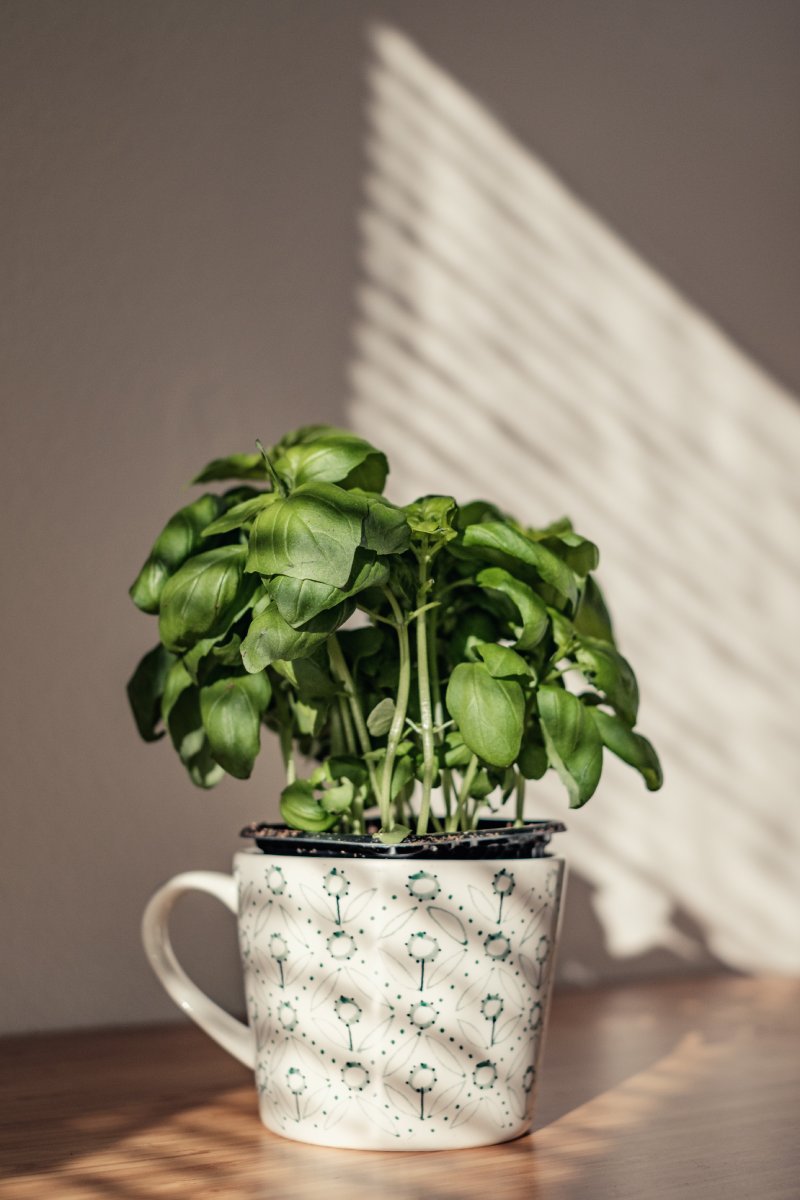
The Process of Sowing Seeds or Transplanting
From Seed to Sprout: A Patient Unveiling
Embarking on your journey with seeds necessitates a period of patient observation as you sow them in trays or pots, enveloping them in nutrient-dense soil, and gently usher them into germination with consistent moisture and warmth.
Transplanting: A Gentle Relocation
Opting for young plants, on the other hand, demands a delicate transplanting process, ensuring minimal disruption to their roots, and providing a nurturing environment where they can establish themselves and sprawl into vibrant maturity.
Nurturing New Growth
Whether seeds or saplings, each requires your attentive care in these initial stages, ensuring they are shielded from overly harsh elements and are granted the consistency they need to steadily unfold.
Tips for Spacing and Positioning
Considerate Spacing: Room to Breathe
Position your herbs thoughtfully, granting each plant the space it needs to expand without encroaching upon its neighbors, ensuring each leaf can bask in sunlight and sip at the water that seeps through the soil.
Aligning with the Sun: Positioning for Light
Understanding the sun’s pathway across your garden allows you to position each herb where it can gleefully bask in adequate sunlight, ensuring photosynthesis fuels its growth and contributes to the development of rich, aromatic flavors.
A Harmonious Assembly: Companion Planting
Position herbs with consideration for their compatibility, allowing those with similar needs and beneficial properties to share space and enhance each other’s growth and vitality.
Importance of Proper Watering and Sunlight
The Sustenance of Sunlight: A Vital Glow
Sunlight quietly whispers life into your herbs, catalyzing processes that see them transform into lush, aromatic plants. Ensure each herb receives the sunlight it requires, whether basking in full sun or nestling in partial shade.
Hydration without Drowning: Mindful Watering
Watering is an art of balance – providing ample hydration without suffocating the roots. Understand the unique needs of each herb, recognizing the subtle signs of thirst and ensuring drainage to safeguard against waterlogging.
Consistent Observation: A Quiet Watchfulness
In the interim, as you nurture these new beginnings, embed a practice of consistent observation. Your herbs, in their unfolding, will whisper their needs through the curvature of their leaves, the reach of their stems, and the rich scent that permeates the air. Through trial, joy, and perhaps a dash of serendipity, your herbs will burgeon into a vibrant tapestry of greenery, weaving a story that is uniquely theirs and irrevocably intertwined with your own.
In the chapters that follow, you’ll delve into the ongoing care, from pruning to pest control, ensuring that your herbs continue to flourish under your tender guardianship, generously bestowing their aromatic gifts upon your garden and table.
Maintaining Your Herb Garden
Embarking on the aromatic journey of herb gardening isn’t where your story ends, but rather, it’s where it deepens. Engaging in consistent, mindful care of your burgeoning herb garden will weave a tale of lush foliage, fragrant surroundings, and flavorful additions to your culinary endeavors. The dedicated maintenance of your herbs not only ensures a vibrant, ongoing supply but also strengthens your connection with the living organisms under your care, enabling a synergistic dance that nourishes both garden and gardener.
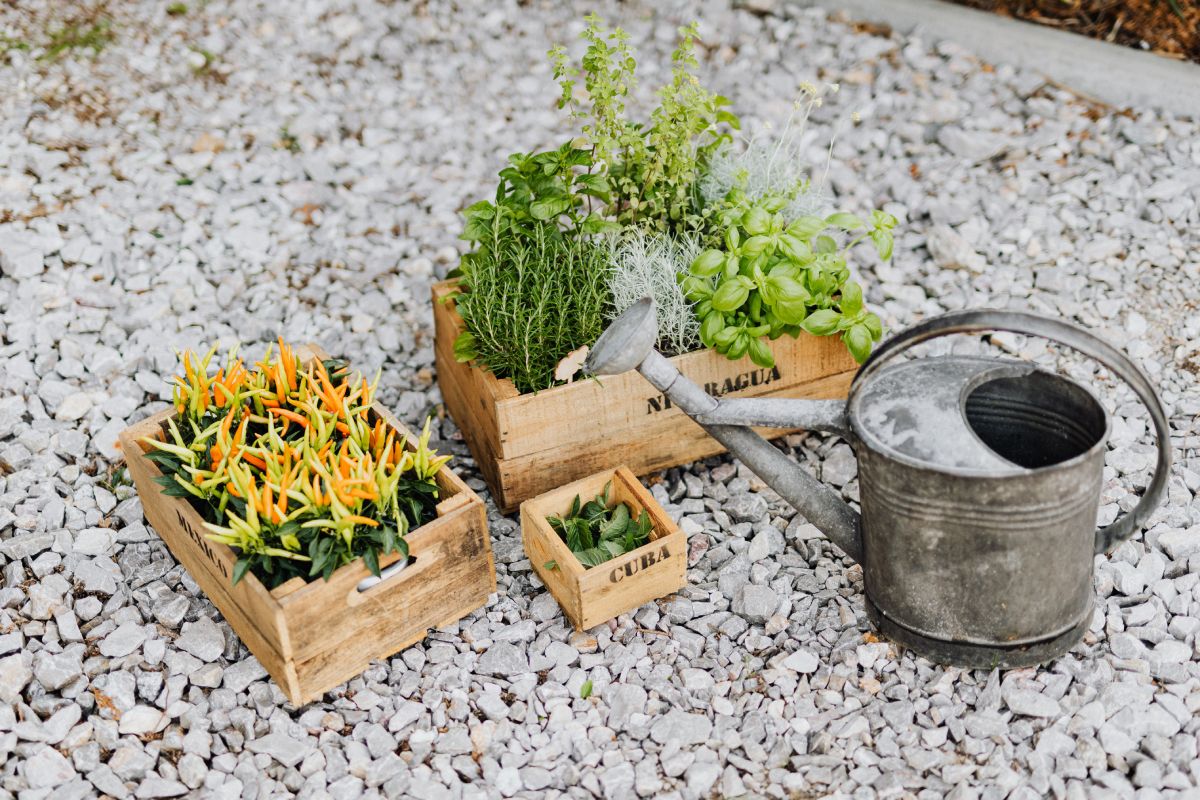
Routine Care: Watering, Pruning, and Weeding
Establishing a Watering Rhythm
Watering stands paramount in your routine, crafting a balance that provides ample hydration without overwhelming delicate roots. Identify the unique needs of each herb, allowing your practice to ebb and flow with the seasons, the weather, and the subtle signals from the plants themselves.
Guided Growth through Pruning
Pruning, while seemingly a subtraction, unfurls as an offering that guides your herbs into fuller, more robust growth. Snipping back certain areas invites the plant to divert energy to others, fostering an abundant, bushy presence that is both visually appealing and plentiful in its yield.
The Persistent Battle against Weeds
Weeding, a task often met with sighs, becomes a meditative practice that not only preserves the unobstructed growth of your herbs but also embeds you deeper into the rhythms and intricacies of your garden.
Dealing with Common Pests and Diseases
Proactive and Reactive Measures against Pests
Your vibrant herbs, while delightful to you, also entice a variety of pests. Engaging in both proactive and reactive measures, from physical barriers to organic pesticides, safeguards your herbs against unwelcome diners and ensures a healthy, edible crop.
Navigating through Potential Diseases
Similarly, diseases, often brought about by fungus or bacteria, can threaten the vitality of your plants. Identifying signs early and employing preventative practices, such as proper spacing for adequate airflow, diminishes the risk and impact of potential illnesses among your herbs.
Building Resilience through Diversity
Entwining your garden with a diversity of herbs and plants not only enhances its aesthetic and aromatic appeal but also establishes a natural barrier against the spread of pests and diseases, as varied plants attract varied creatures and complications.
The Importance of Rotation for Perennial Herbs
Enabling Rest and Rejuvenation
Rotation of perennials, particularly those housed in pots, allows the soil and roots periods of rest and rejuvenation. By occasionally introducing new plants to the soil, you allow it to recover and replenish nutrients, ensuring that each generation of herbs can draw from a well-nourished foundation.
A Continuous Dance of Movement
This cyclic dance of movement, of introducing new life to established spaces, reflects the ongoing, ever-changing narrative of your garden. It respects the natural tendencies of the plants, of the soil, and of the environment in which they thrive, allowing each element to contribute and draw from the collective.
Fostering a Sustainable Practice
As you embed this practice into your gardening, you weave a thread of sustainability that not only enhances the longevity and productivity of your herbs but also echoes into a broader, ecological tapestry, fostering a practice that is mindful, respectful, and synergistically intertwined with the natural world.
As your garden unfolds, twining its way through seasons and cycles, you will witness not just the physical, tangible growth of the herbs under your care, but also the blossoming of knowledge, understanding, and connection within yourself, cultivating a rich, aromatic narrative that permeates beyond the boundaries of the garden itself.
Harvesting Your Herbs
The tale of your herb garden reaches a pivotal chapter when the plants stand lush and fragrant, ready to be harvested. This moment is a gentle blend of excitement and mindfulness, as the way you harvest your herbs not only influences the current yield but also directs the future growth and vitality of the plants. Ensuring that your herbs are plucked with care and at the appropriate time is pivotal in maintaining a continuous, abundant supply, while also safeguarding the wellbeing of the plants that have so graciously shared their foliage with you.
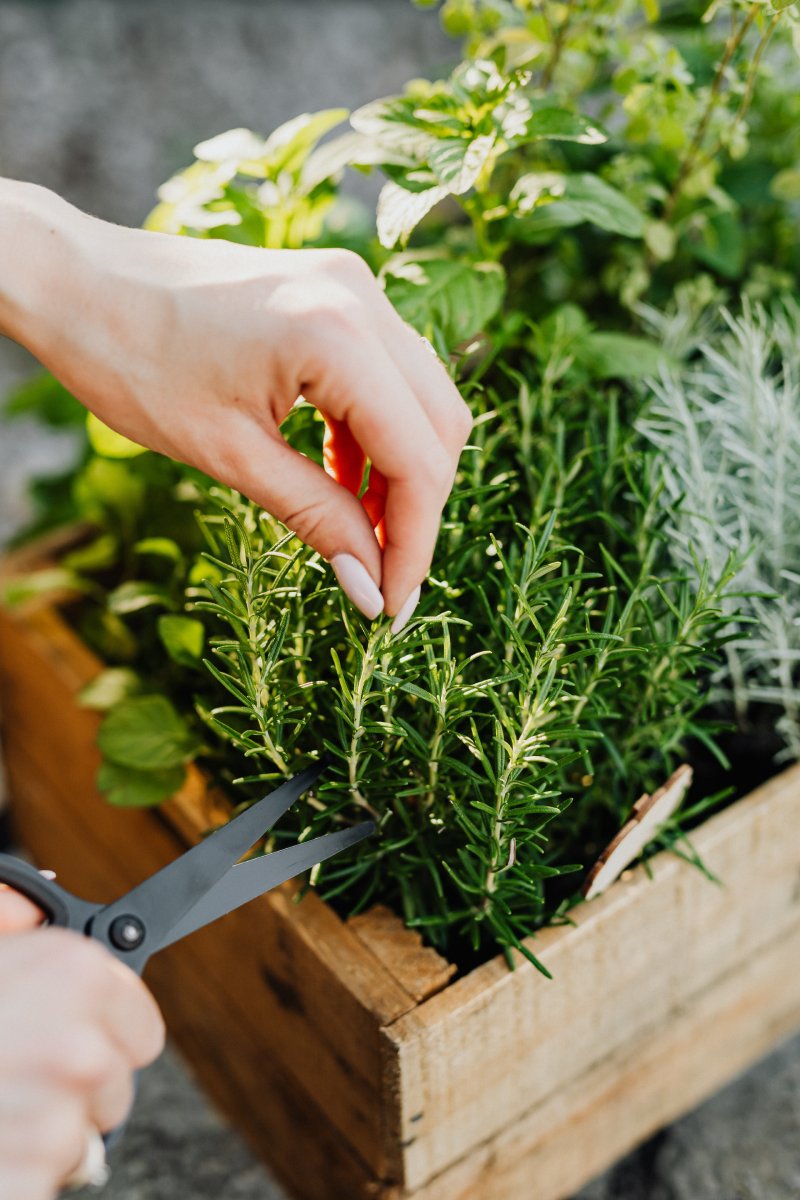
Identifying the Right Time to Harvest
Tuning into the Herbs’ Rhythms
Understanding when to harvest hinges on attuning yourself to the subtle, yet clear signals from the herbs themselves. Observing the size, color, and aroma of the leaves, while also acknowledging the particular life cycle of each herb, fosters a harvesting practice that honors both the plant and your culinary endeavors.
Moving with the Seasons
Harvesting often intertwines with the seasons, with each herb presenting its peak at varied points throughout the year. This rhythmic ebb and flow invites you into a cyclical dance with your garden, where you move in harmony with the natural cycles enveloping your plants.
Techniques for Harvesting Different Types of Herbs
Respecting Individual Growth Patterns
Every herb unfurls its leaves in its own unique pattern, necessitating varied approaches to harvesting. Whether snipping leaves from the top, taking whole stems, or removing individual leaves, aligning your technique with the growth pattern of each herb encourages sustained, healthy development throughout the season.
Employing Appropriate Tools
Utilizing tools that are both sharp and clean ensures a precise cut that minimizes stress and damage to the plant, while also mitigating the risk of transmitting diseases between plants or sections of your garden.
Engaging with Gentle Hands
While tools play a pivotal role, sometimes, the gentle touch of your hands is the most appropriate means to harvest, particularly for delicate herbs or when only a few leaves are needed.
Tips to Maintain Plant Health during Harvest
Maintaining Balance between Giving and Taking
Being mindful of how much you harvest, ensuring you never take more than a third of the plant at any one time, ensures that the herb can continue to flourish and provide in future.
Focusing on Sustainable Practices
Ensuring that your practices are sustainable and considerate maintains the harmony of your garden, allowing each plant to contribute continuously throughout its life cycle.
Harmonizing with the Plant’s Lifecycle
Aligning your harvest with the plant’s natural life cycle, ensuring you’re not harvesting too early or too late, not only secures a flavorful, aromatic yield but also acknowledges and respects the natural rhythms and inclinations of the herb.
Providing Post-Harvest Care
After harvesting, providing your herbs with attentive care, from watering to perhaps a gentle feed, supports them in their recovery and prepares them for future growth and subsequent harvests.
Harvesting is an art—a gentle intertwining of human and plant, where both give and receive. Engaging in this practice with respect, mindfulness, and a genuine understanding of each herb’s needs and offerings fosters a relationship that extends beyond that of gardener and garden, weaving a narrative that is sustainably abundant, deeply connected, and richly flavored.
Using and Preserving Your Herbs
The fruits of your herb gardening labor bring us to the rich tapestry of flavors and aromas that these green wonders bring into our culinary experiences. Utilizing fresh herbs in your meals elevates dishes with a burst of flavor, while preserving them ensures you can enjoy their vibrant tastes even out of season. Let’s delve into the tantalizing world of using and preserving herbs, exploring how to intertwine them into your cooking and keep them at hand throughout the year.
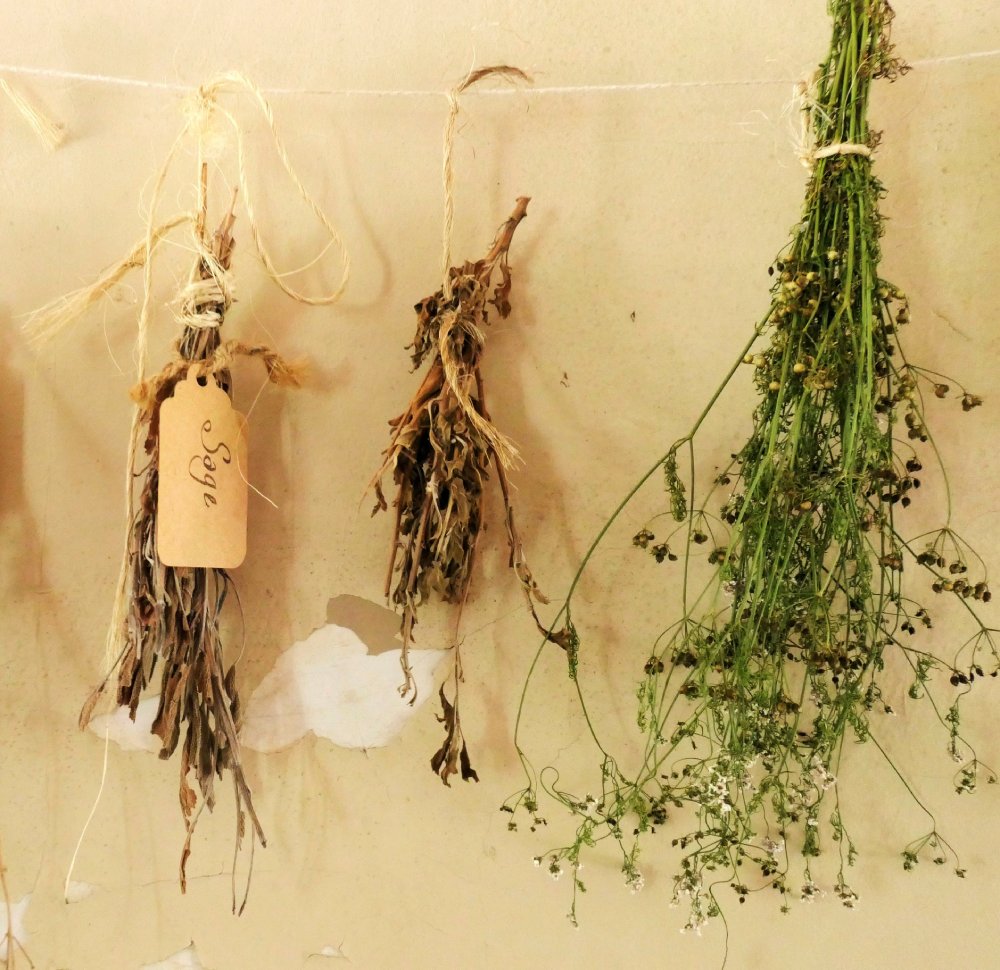
Tips on Using Fresh Herbs in Cooking
Integrating Freshness into Every Meal
Unleashing the robust flavors of fresh herbs in your dishes commences with understanding their potency and pairing them judiciously with your ingredients. Whether garnishing a completed dish or simmering them into sauces, fresh herbs impart a rich, aromatic character that dances delightfully on the palate.
Enhancing Flavors with Subtlety
Taking note of the unique flavor profiles of each herb allows you to blend them skillfully into your cooking, accentuating flavors without overwhelming them. Recognizing when to add herbs during the cooking process is crucial, as some may lose their vigor when exposed to prolonged heat.
Crafting Culinary Experiences
Experimenting with different herb and food pairings will guide you in crafting meals that are both nourishing and a celebration of flavors, creating culinary experiences that resonate with both familiarity and exploration.
Preserving Methods: Drying, Freezing, and Making Herb Oils
Embracing the Art of Drying
Drying herbs is a practice steeped in tradition, offering a means to savor their flavors throughout the colder months. The method involves hanging bunches in a warm, dry space or using a dehydrator, preserving not only their taste but also a whisper of summer’s warmth.
A Freshness Frozen in Time
Freezing herbs, either on their own or encapsulated in oil or water in ice cube trays, provides a convenient way to inject fresh herbaceous notes into your winter dishes.
Infusing Oils with Herbal Essence
Creating herb-infused oils is not only a beautiful method of preservation but also provides a delightful means to add an extra layer of flavor to your meals. A gentle simmer of herbs in quality oil, followed by straining and bottling, captures the vibrant essence of your garden in a bottle.
Shelf Life and Storage Considerations
Securing Potency and Flavor
Ensuring that preserved herbs maintain their potency involves storing them correctly. Keeping dried herbs in a cool, dark place, and ensuring that frozen or bottled items are stored appropriately, safeguards their flavors and vitality.
Observing Changes and Freshness
Being attuned to changes in color, aroma, and texture in your preserved herbs ensures you are always using them at their best, providing optimal flavor and quality in your dishes.
Labeling and Rotation
Accurately labeling and dating your preserved items, and practicing a rotation system, guarantees that you are always using your oldest items first and enjoying your herbs while they’re still vibrant and flavorful.
In the journey from garden to table, herbs weave a story that is inherently tied to the cycles of nature and the nuances of flavor. Engaging in the practice of using and preserving these aromatic plants with respect, creativity, and an understanding of their individual characteristics, ensures that your culinary endeavors are imbued with the full, vibrant essence of each leaf, sprig, and stem. May your meals be ever vibrant and your pantry evergreen with the preserved vitality of your herb garden.
Conclusion
Embarking on the journey of cultivating your own herbs is an endeavor that extends far beyond the simple act of gardening. It is a wholesome blend of connecting with nature, exploring culinary adventures, and embracing a sustainable lifestyle. Growing herbs at home not only infuses your meals with fresh, vibrant flavors but also supports a green lifestyle, contributing to our collective efforts toward environmental preservation.
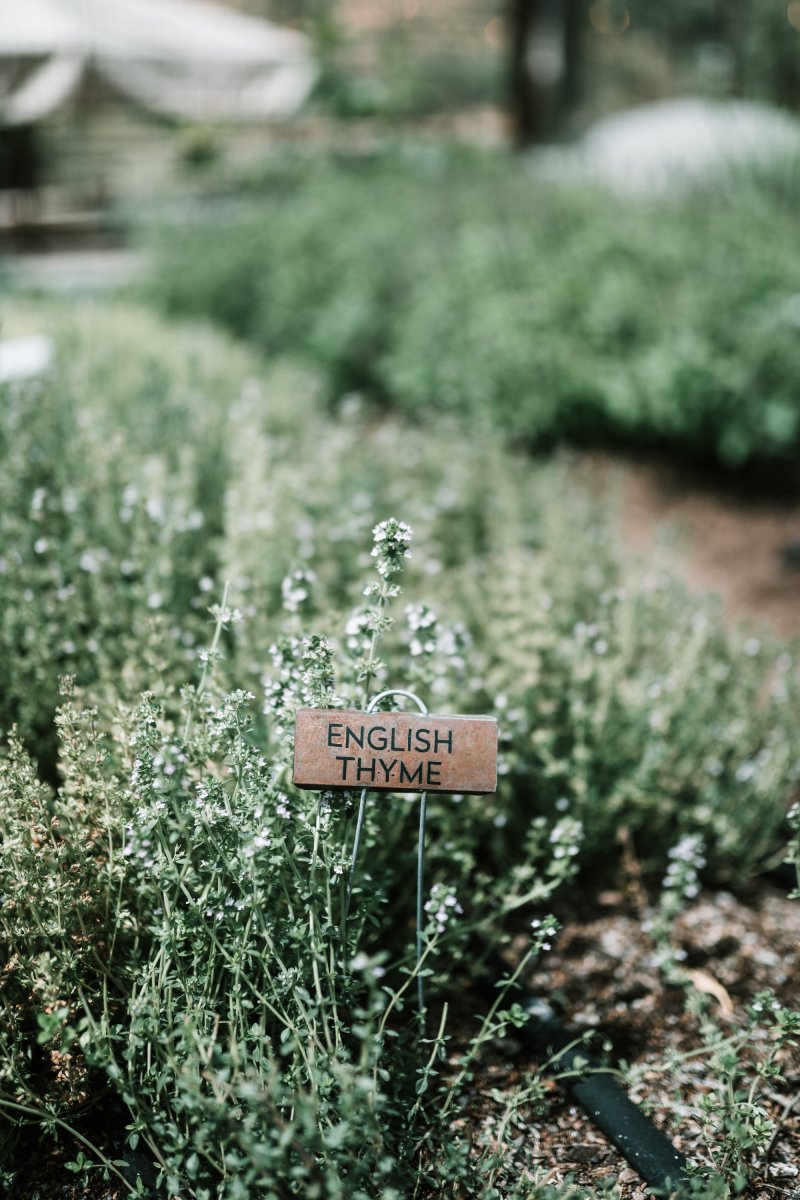
Recap of the Joy and Benefits of Growing Your Own Herbs
A Green Journey of Flavor and Sustainability
Engaging in herb gardening immerses you in a world where the simplicity of green, fragrant leaves holds the promise of exquisite flavors and sustainable living. The process from sowing tiny, hopeful seeds to enjoying the lush, flavorful leaves is a journey filled with learning, discovery, and a deepening connection with the natural world.
Reveling in Culinary Creativity
The piquant aroma and flavors of fresh herbs plucked straight from your garden don’t just elevate your dishes; they open up a realm where your culinary creativity knows no bounds. It’s a space where you get to explore, experiment, and create meals that are as nourishing as they are flavorful.
Encouraging Readers to Start Their Own Herb Garden
Unveiling a Universe of Green Possibilities
Starting your own herb garden might seem like a tiny step, but it’s a leap into a universe brimming with green possibilities. It’s not merely about the herbs; it’s about the joy that sprouts from witnessing the growth, absorbing the vibrant energy of living plants, and the satisfaction of harvesting your own food.
A Venture Accessible to All
Remember, you don’t need a sprawling garden to get started. A small balcony, a windowsill, or even a well-lit corner indoors can become a miniature haven where herbs thrive. Embarking on this green venture is a universally accessible joy, unhindered by space and experience.
Final Thoughts on the Sustainability and Flavor Advantages
A Sustainable Step Forward
Growing your own herbs is a step towards sustainability, reducing the need for store-bought options that often come in plastic packaging. Your green endeavors contribute to minimizing waste and reducing your carbon footprint, all while granting you the freshest possible ingredients right at your fingertips.
Flavor That Transcends the Ordinary
The unmatched freshness of home-grown herbs introduces your culinary creations to a spectrum of flavors that far surpasses the ordinary. It’s an exploration into the profound depth and breadth of tastes and aromas that only the freshest herbs can provide.
Infusing Every Meal with Vibrancy and Health
Moreover, incorporating fresh herbs not only elevates the taste but also enhances the nutritional profile of your meals, intertwining health with every flavorful bite.
In the aromatic leaves of your home-grown herbs lie not just flavors, but stories—stories of sustainable living, culinary adventures, and the silent, miraculous journey from seed to sprout to flourishing plant. As we wrap up our guide to growing your own herbs, may your fingers be stained with the vibrant green of freshly plucked basil, and may your meals resonate with the wholesome, hearty flavors of your own little green haven. May the cycles of planting, growing, harvesting, and savoring become a cherished part of your daily life, infusing each moment with the quiet joy and profound fulfillment found in the garden.
Embrace the green. Let it weave through your meals and your life, intertwining your days with a sustainable, flavorful future.

